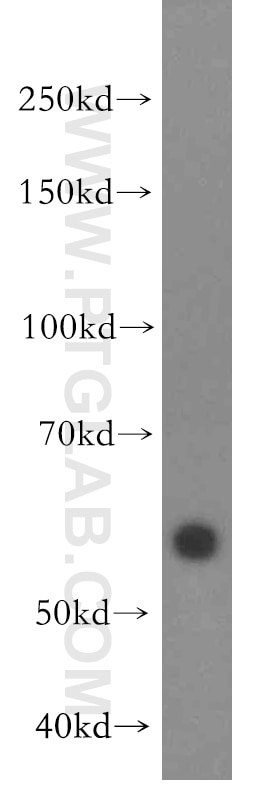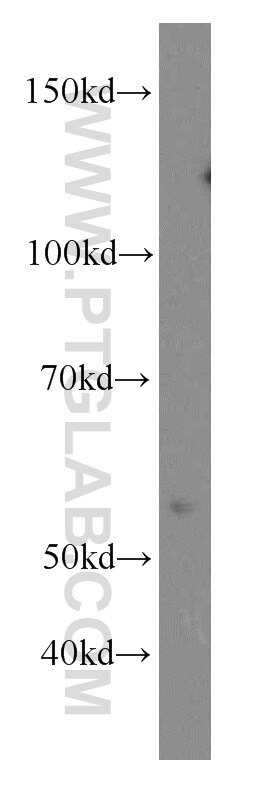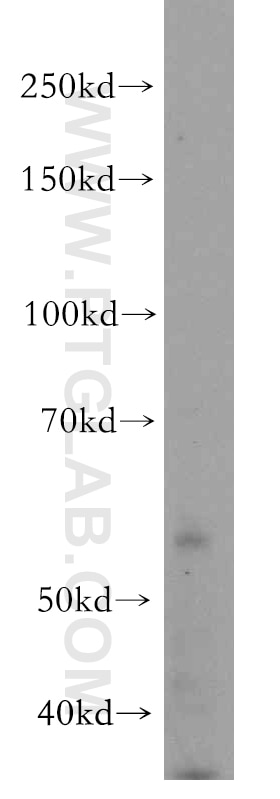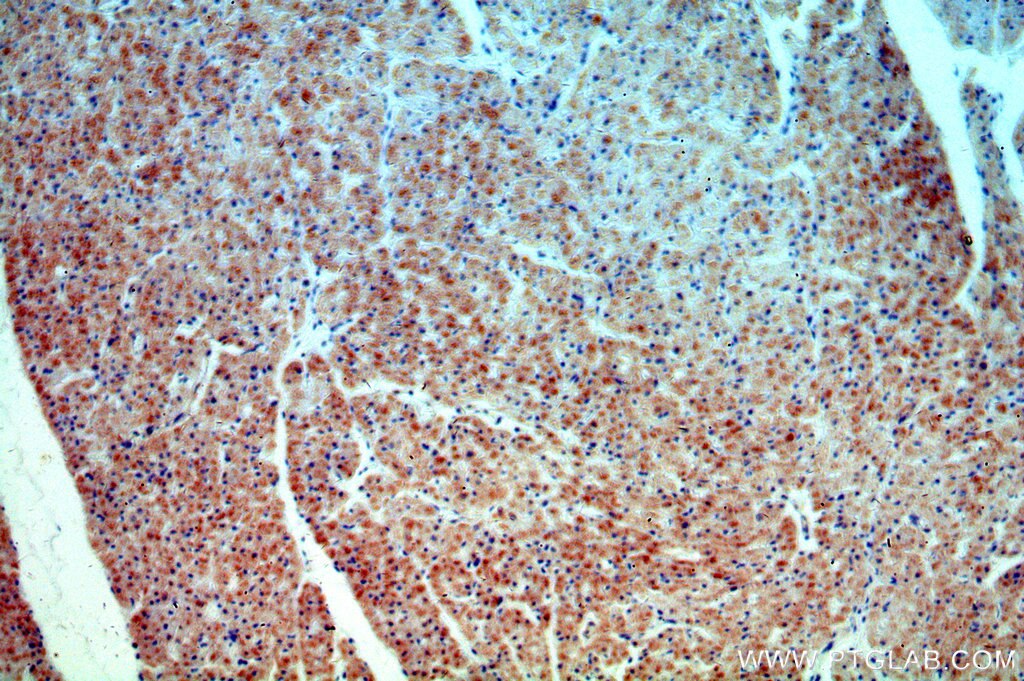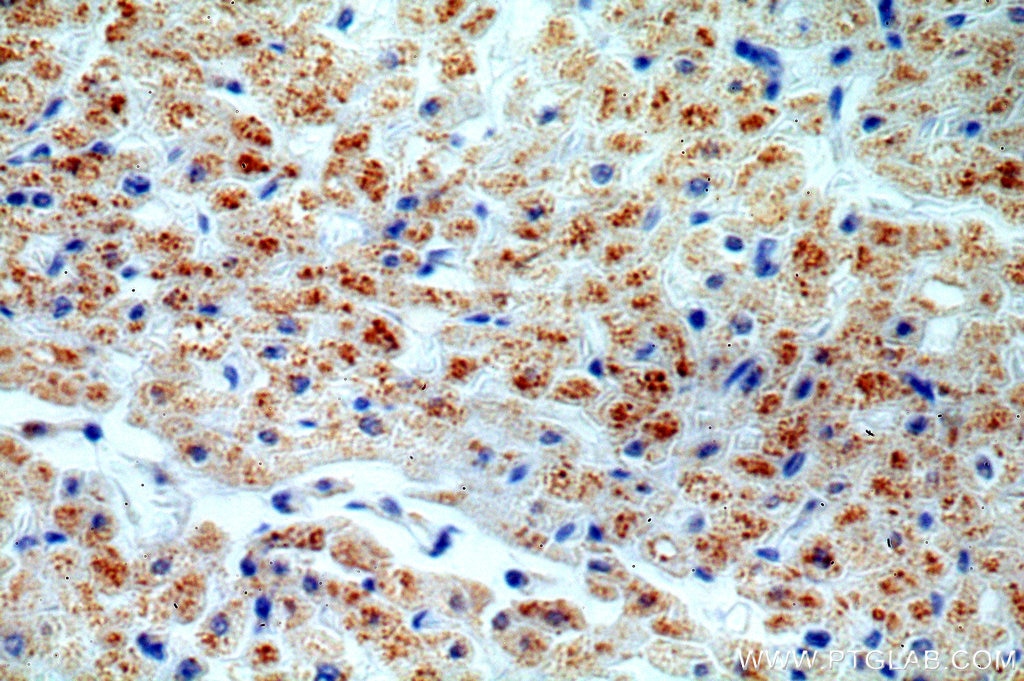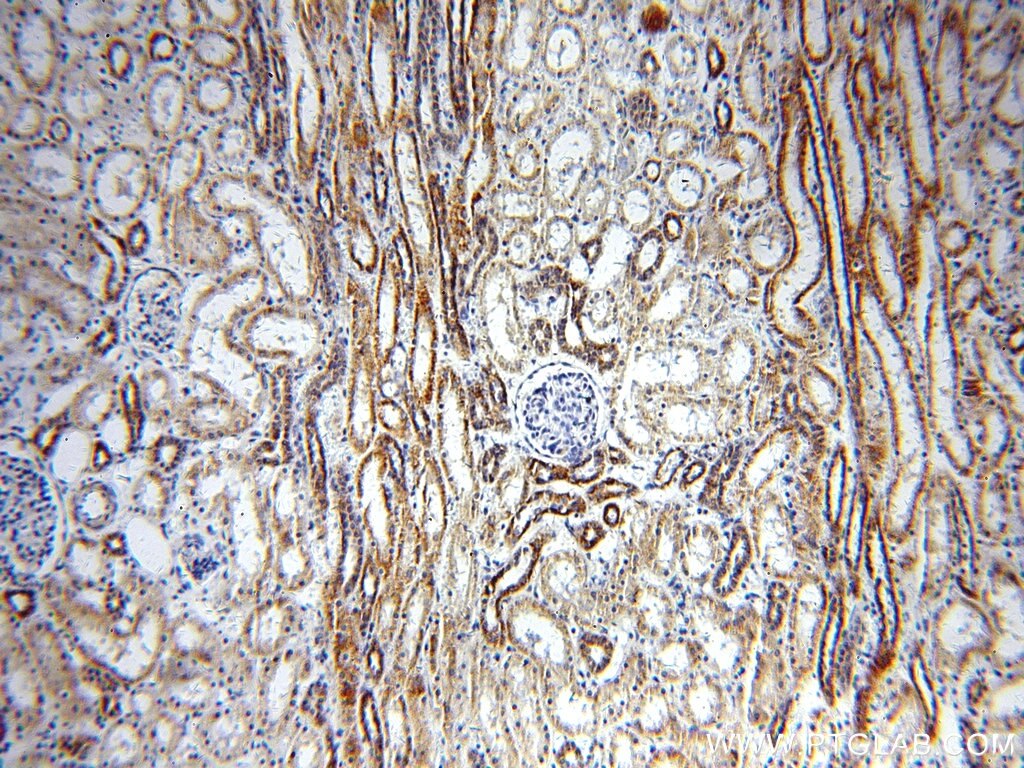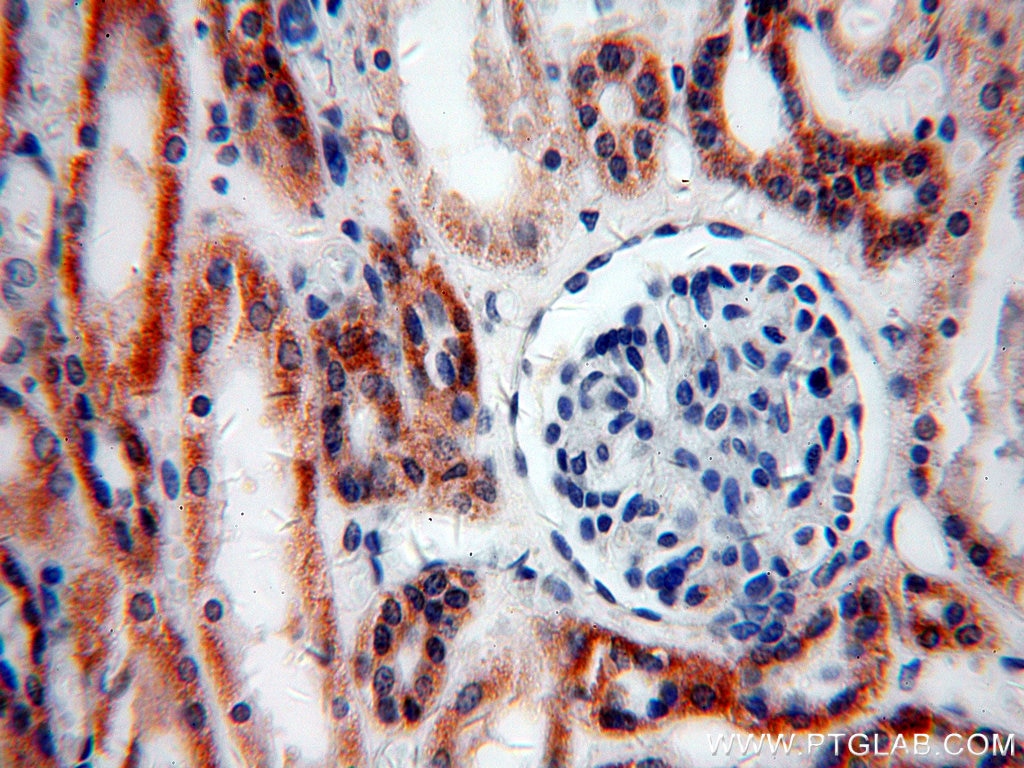Tested Applications
| Positive WB detected in | SH-SY5Y cells, human brain tissue, mouse kidney tissue |
| Positive IHC detected in | human heart tissue, human kidney tissue Note: suggested antigen retrieval with TE buffer pH 9.0; (*) Alternatively, antigen retrieval may be performed with citrate buffer pH 6.0 |
Recommended dilution
| Application | Dilution |
|---|---|
| Western Blot (WB) | WB : 1:500-1:3000 |
| Immunohistochemistry (IHC) | IHC : 1:20-1:200 |
| It is recommended that this reagent should be titrated in each testing system to obtain optimal results. | |
| Sample-dependent, Check data in validation data gallery. | |
Product Information
19549-1-AP targets TRAPPC9/NIBP in WB, IHC, ELISA applications and shows reactivity with human, mouse, rat samples.
| Tested Reactivity | human, mouse, rat |
| Host / Isotype | Rabbit / IgG |
| Class | Polyclonal |
| Type | Antibody |
| Immunogen |
Peptide Predict reactive species |
| Full Name | trafficking protein particle complex 9 |
| Calculated Molecular Weight | 139 kDa |
| Observed Molecular Weight | 56 kDa |
| GenBank Accession Number | NM_031466 |
| Gene Symbol | NIBP/Trappc9 |
| Gene ID (NCBI) | 83696 |
| Conjugate | Unconjugated |
| Form | Liquid |
| Purification Method | Antigen affinity purification |
| UNIPROT ID | Q96Q05 |
| Storage Buffer | PBS with 0.02% sodium azide and 50% glycerol, pH 7.3. |
| Storage Conditions | Store at -20°C. Stable for one year after shipment. Aliquoting is unnecessary for -20oC storage. 20ul sizes contain 0.1% BSA. |
Background Information
TRAPPC9, also named NIK- and IKBKB-binding protein (NIBP), is involved in the NF-kappaB signaling pathway and directly interacts with IKK-beta and MAP3K14. TRAPPC9 functions as an activator of NF-kappa-B via increased phosphorylation of the IKK complex. TARPPC9 may also function in neuronal cells differentiation and defects in TRAPPC9 are the cause of mental retardation autosomal recessive type 13 (MRT13), which is characterized by significantly below average general intellectual functioning associated with impairments in adaptative behavior. TARPPC9 is a component of the multisubunit TRAPP (transport protein particle) complex and it may play a role in vesicular transport from endoplasmic reticulum to Golgi.

